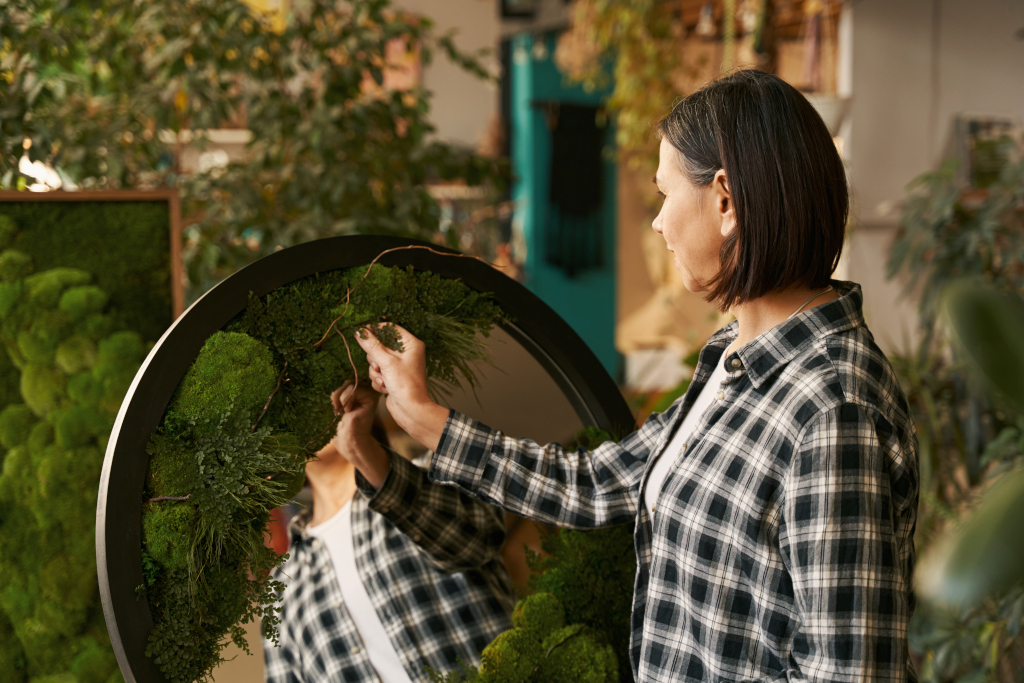Have you ever tried to grow a basil plant on a kitchen counter… only to watch it stretch, wilt, and die slowly from lack of sunlight? You move it closer to the window.
Still not enough.
You try a grow light, only to be disappointed by the awkward glow and electricity bill.
I was right there too, desperate to revive my sad little herb corner. So when someone casually told me, “Why not use a mirror to bounce sunlight onto them?”
I gave them a look. A mirror…? For growing plants?
Turns out that idea wasn’t wild at all. In fact, it’s backed by physics and plenty of practical success.
The big idea: Use mirrors to boost plant growth in low-light areas
Sunlight drives photosynthesis—the process that lets plants turn light into energy. But here’s what surprised me: 🪞
Mirrors actually reflect about 95% of the sunlight that hits them. Only about 5% is lost. That means mirrors can redirect sunlight—almost as powerfully as the real thing—to spots that would otherwise get little to no light.
And yes, plants can absolutely grow with that reflected light.
So what’s the catch? 3 key factors that matter
Using mirrors to give your plants a sunlight boost can work wonders—but only if you do it right. Here’s what makes or breaks their success:
1. Mirror placement and size
The bigger and closer the mirror is to your plants, the more light they’ll receive. But here’s the trick: You’ll need to adjust the angle throughout the day to follow the sun’s movement.
A fixed mirror might work for just part of the day. A movable setup, or placing mirrors in the south or west-facing windows strategically, gives you more consistent results.
The 2022 study investigated how strategically placing light-reflecting mirrors on the floors of multistory indoor farms can significantly boost the availability of natural, free sunlight to lower-level plants.
The findings demonstrated that well-designed mirror systems can enhance light exposure and improve plant growth without ongoing energy costs
2. The kind of plant you’re growing
Not all plants will love this setup equally. Shade-tolerant plants like spinach, chard, lettuce, kale, or herbs thrive with just 4–6 hours of filtered or reflected light.
Fruiting vegetables—like peppers or tomatoes—typically need 8+ hours of strong, direct sun to produce. They may struggle with reflected light alone. So if you’re using mirrors indoors or in shaded gardens, start with leafy greens.
You’ll see success faster—and more consistently.
3. Light duration still counts
Even though reflected light is about 95% as intense as direct sunlight, your plant still needs enough hours of light to thrive.
As a rough guide:
– Leafy greens: 4–6 hours/day (reflected light is usually enough)
– Fruiting plants: 8–10+ hours/day (reflected light may help, but not replace direct sun completely)
A 2018 DIY experiment in Paris placed mirrors around a north-facing apartment balcony garden. The mirrors increased light exposure by 40–50%, turning a previously unproductive area into a lettuce-and-spinach haven throughout spring and summer.
Final thoughts: A mirror might be your garden’s secret weapon
So, can plants grow from sunlight reflected by a mirror? Absolutely—especially the right plants, in the right place, with enough light exposure.
It’s a simple, low-cost trick seasoned gardeners (and savvy apartment dwellers) have used for years to maximize sunlight in tough growing spots.
Try setting up a mirror yourself. Observe the change day by day.
You might be amazed at how fast your leafy friends perk up. And next time you spot a dusty old mirror in the garage? You just might see a thriving garden staring back at you.
Ready to test it? Start with a mirror and some baby spinach—and report back after two weeks. You’ll never look at window light the same way again.




Leave a Comment